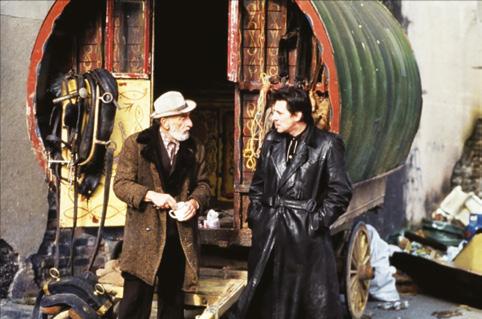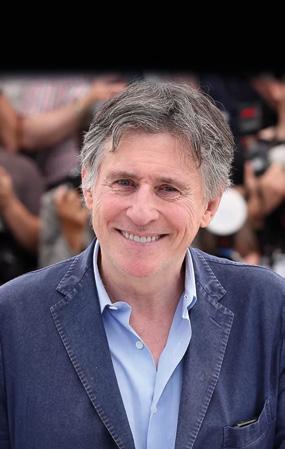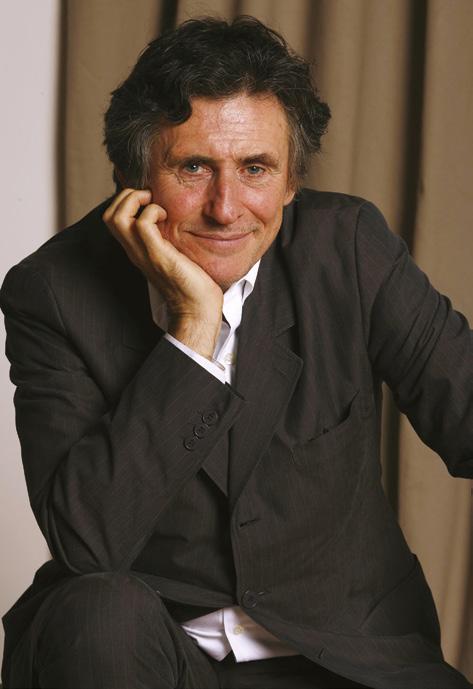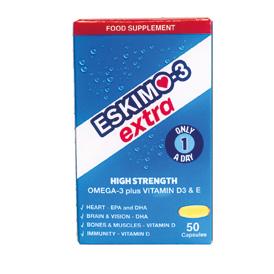
16 minute read
Surviving Hollywood’s poisoned goldfish bowl

It would be difficult to find an actor with more integrity than Gabriel Byrne. From the days of his television apprenticeship at the not-too-young age of 29 to his present status as a member of Hollywood royalty and one of Ireland’s national treasures, the soft-spoken Crumlin man has negotiated the tripwires of Hollywood’s poisoned goldfish bowl with his quiet charm.
This is partly due to his disenchantment with it: ‘The monster is eating its own tail now. It will eventually annihilate itself.’ Dublin was a good preparation for it: ‘It can be a very bitchy, back-stabbing, gossipy backwater.’ He loves coming back here but doubts he could live here again for a long period.
His incredible career has netted him too many accolades to mention. They culminated in a Lifetime Achievement Award from the Irish Film and Television Academy in 2018. He turned 70 last year and his film tally equals that figure. He now sits at the top of the film world like an elder statesman, the wise man on the hill delivering paternalistic soundbites to his many acolytes, whether they’re ‘in treatment’ or not. Despite all his Emmys, his Tonys, his Golden Globe and so many other awards and nominations, when you mention Gabriel to people they don’t tend to point to any one film or theatre or TV performance as his signature tune. In other words there’s no one film, play or TV series that stands out as giving us the epitomic Byrne performance.
The gems of richness are scattered pell-mell throughout a cavalcade of work that feature different aspects of it. There are very few turkeys in that canon which is unusual for so prolific a career. ‘If you’re in a bad film,’ Richard Burton once advised, ‘Make sure you’re the best thing in it.’ That was often true of Gabriel too. He acted with Burton in the mini-series Wagner early on in his career and had a very fruitful, if brief, friendship with him. Burton was on his last legs at the time but he was still able to impart some very useful advice to Gabriel about ‘the craft’ which stood him in good stead after he made his name. It was a thankless role for Gabriel. He had only ten lines in it, spread across six countries, but it enabled him to watch his heroes at work. Not only Burton but the heady triumvirate of Laurence Olivier, Ralph Richardson and John Gielgud as well. Another quotation I remember of Burton’s was, ‘An actor is something less than a man. An actress is something more than a woman.’ I beg to disagree. Actors at their best combine the masculine and feminine. We have only to look at someone like Marlon Brando to see the cohesion. Or Gabriel Byrne.
Aubrey Malone traces the life and times, so far, of Gabriel Byrne


Gabriel Byrne in the 1992 film Into The West with David Kelly With Mary Kearns and Sean Lawlor in a scene from the hit RTE series Bracken
Women have always played a big part in his life. This is evident from his recently-published book Walking with Ghosts (Picador, £16.99). It’s one of the best memoirs I’ve ever read. I didn’t think he could better his last one, Pictures in My Head, but he has. Every page is a gem. It’s a book you don’t want to finish. The imagery is to die for. He loads every rift with ore in streams of consciousness that remind you of everyone from John McGahern to Des Hogan. His vision is prismatic, epigrammatic. If you’re looking for an A-Z of his career or life, look elsewhere. The style is all over the place.
The first woman in his life, of course, was his mother. He writes beautifully about her, and about the manner in which she gazes wideeyed at his odyssey from the deprived streets of Drimnagh and Walkinstown to the luxury of Bel Air. Some of her comments at the transition are hilarious. So are those of his discombobulated father. When Gabriel first appears on television, he remarks, ‘You look just like yourself.’ When Gabriel asks him to buy a ticket to see him in a play in which he’s appearing he says, ‘We can see you here for nothing.’ His mother wondered why more people in Hollywood didn’t put their washing out.
Both of them were devastated when he decided to join the priesthood. That happened when he was only 11. Today it’s uncanny for anyone to think a person could be expected to know what they want to do with their life at that tender age. The church began their recruitment drives early in the 1960s.
My brother once told me he made his mind up to become a Jesuit at the age of 12. A missionary priest came to our college and gave a talk about what such a life would entail. He was entranced by it. Gabriel was similarly seduced by a mission statement. he was told to leave. This should really have happened after four days, or even four minutes. It was the best thing that ever happened to him because he was never cut out for that kind of life. He had too much living to do.
His departure from the clerical fold threw him into the world of plumbing. This was something he was equally unsuited for. ‘They kept sending me on errands hoping I’d get lost,’ he said once, ‘I was the most useless plumber in Ireland.’ He studied archaeology in UCD and later taught it along with Spanish. In those years, as when he dallied with his ‘vocation,’ he felt a sense of rootlessness. It went away when he found acting, or rather when acting found him. In this he found a sense of belonging, a kind of anti-self that liberated him.
Some of his work with the Dublin Shakespeare Society was anachronistic: ‘I had a black jumper with black bell- bottoms. Nobody ever explained how Marcus Aufidius happened to be wearing bell-bottoms in ancient Rome.’ He first came to the attention of the public in The Riordans. It morphed into Bracken after it went off the air. His brooding good looks and casual acting style made him into a hometown hero and a heart-throb for the ladies. The soubriquet ‘Irish Heathcliff’ was trotted out so relentlessly he came to abhor it. It wasn’t long after this that he gave a very respectable performance in the political thriller Defence of the Realm opposite Denholm Elliott. He felt Elliott upstaged him and said of the experience, ‘The old dictum of avoiding acting with animals and children should be amended to, “Never act with animals, children, or Denholm Elliott.”’
The film made his name, however, and freed him from the agonies of having to do auditions, which he hated. His career afterwards was notable for many stand-out films. The most talked-about one was Bryan Singer’s The Usual Suspects, which made him mega. Having said that, it’s not necessarily his greatest performance. It was largely an ensemble piece, a director’s film that became a kind of cult.
Gabriel’s secret was his longevity. He kept on keeping on. There were times when a ‘Tallaghtfornia’ accent made you wonder if he was playing Irish people or Americans but there was no gainsaying the truth of his acting. He put a lot of store into concentration, the Method actor’s main tool, and it showed. His kind eyes brought warmth to characters who may not have evinced such qualities on the page before he alchemised them with his compassion.
Such compassion is as evident on the page as the stage. It comes across in the sweep of anecdotes that pepper his book, whether he’s writing about Burton telling him films don’t cure cancer or John Boorman advising him how to make love to a woman while wearing a suit of armour on the set of Excalibur or Sir Larry barking abuse at him after he has the audacity to ask him what time it is and then regretting his rudeness and leaving a poem for him in his dressing room by way of an apology.
Gabriel Byrne is a shy and sometimes insecure man. Maybe all actors are. It’s what makes audiences so important to them. They’re continually seeking validation from them. When they don’t get it they become traumatised. Gabriel says he’s seen major stars throwing up backstage before their performances. He’s done it himself.
Only when you say those first few words do you relax. It’s worse in the theatre because there’s nobody to shout ‘Cut’ if you do it wrong. There’s also the problem of having to listen to hissing, or have rotten tomatoes thrown at you. Or thinking someone is nodding off in the front row as you deliver your killer soliloquy, only to discover afterwards that they have a medical condition. This happened to Gabriel, making him feel six inches tall after he shouted at the man in question to ‘Wake up!’
Gabriel Byrne with his great friend Liam Neeson



Walking with Ghosts isn’t only about Gabriel’s life in film. It’s also about his problems with alcoholism, with the sexual abuse of a priest, with a woman who stalked him ominously, and with relationships in general. He doesn’t write too much about his siblings but there’s a heartbreaking chapter about one of his sisters who had psychological problems. He writes so sensitively about her it will bring you close to tears.
Another chapter that touched me deeply was one where he writes about a childhood friendship he had with a tearaway tomboy who lived close to him in Walkinstown. He admits he ruined this by pretending he had sex with her so he could sound macho to his male friends.
She never forgave him and thus the wild purity of their relationship was ruined. She never talked to him afterwards. The last he heard of her she was pregnant and gone to England. Here, as elsewhere, he isn’t slow to tell a story against himself. His book is as brutally honest as the man himself. He writes equally vividly about his strengths and his weaknesses, his victories and his defeats, his aspirations and his disappointments. Every time we get a poignant vignette it seems to be followed by a humorous one. The book will make you laugh as often as cry. Its standout quality is the richness of the language. The images land on the page like fractured shards of light splintering into iridescence. I was blown away by the plethora of them, one after the other as they drip with seeming effortlessness from his pen. I’ve always believed that Gabriel hadn’t taken up acting he would have been in the front rank of writers in Ireland. In fact he is anyway.
The book is also notable for its omissions. He only writes about a handful of his films and then just in passing. Neither does he mention Aine O’Connor, at least by name, despite having had a decade-long relationship with the ill-fated TV presenter. Nor does he write about his marriage to Ellen Barkin. That was covered in Pictures in My Head but I expected more here. I also expected more about his present partner Hannah Beth King and the daughter they had together three years ago whom he dotes on. These people may turn up in a future book. I hope he doesn’t finish his literary career with this one. No more than Graham Norton, who’s reinvented himself as a novelist in recent years, there’s a whole world out there for him to tap into if he so wishes. He once described writing as ‘sculpting things with words,’ like taking photographs of himself.
Gabriel Byrne's latest book Walking with Ghosts

& VITAMIN D BOOST
FUEL YOUR BRAIN
We all have those moments, whether it’s forgetting a person’s name, or where we put the car keys – aaaargh! As we get older, the brain shrinks so its really important to nourish your brain with healthy foods. Believe it or not, the typical human brain is actually about 60% fat, so including foods with healthy fats is important to keep the ‘mission control’ up and running. Oily fish (sardines, anchovies, mackerel, salmon) are rich in omega-3 DHA - the brainy member of the omega-3 family; however 89% of Irish people are not consuming sufficient oily fish in their diet, so often there is a need supplement. People who don’t get enough omega-3s in their diet can become demotivated, disinterested, forgetful and may experience low moods. With high levels of omega-3 DHA along with seed oils, vitamin D, E and CoQ10, you’ll feel focused in no time.

Omega-3,6,9 plus vitamin D, E and CoQ10 Omega-3 is vital to maintain a healthy heart. 250mg Omega-3 DHA - vital for brain function and vision. Vitamin D is essential for strong bones, a healthy immune system and muscular function. Eskimo Brain 369 is available in liquid and capsules

OMEGA-3 & VITAMIN D
Both omega-3 and vitamin D offer a myriad of health benefits to the body and deficiency of both is widespread. According to The Irish Longitudinal Study on Ageing (TILDA) at Trinity College Dublin, it is recommended that you get 10-20 ug per day via diet or supplementation to maintain adequate levels. Eskimo-3 Extra combines 800mg premium omega-3 fish oil with 20ug natural vitamin D3 in a one-a-day capsule. Omega-3 fatty acids are essential, they cannot be synthesised in the body and must be obtained from food or via supplementation. 800mg omega-3 and 20μg vitamin D3 in each capsule.
Omega-3 for a healthy heart, brain function and vision.
Vitamin D is essential for strong bones, teeth and muscular function.
Vitamin D contributes to normal function of the immune system
Suitable for adults at risk of vitamin D deficiency.
Ideal support for sports enthusiasts/ athletes.
Available in health food stores, pharamcies and online - eskimo3.ie
eskimo3.ie
JOINT SUPPORT
ZinCuFlex contains a unique combination of high potency extracts of ginger and curcumin with vitamin C - all of which contribute towards the normal function of bones and cartilage. Ginger and curcumin (the active part of turmeric) in particular are well known for their benefits for joint health: Ginger helps to maintain joint mobility and avoid morning stiffness and curcumin helps to control inflammatory responses in the body. Vitamin C also plays an essential role, helping contribute to normal collagen formation and the function of bones and cartilage. The ginger and curcumin in the ZinCuFlex complex are in highly bio-available forms to aid absorption. This means greater levels of active curcumin can be released to support joint, brain and overall immune health.

Laid to rest after many a fight
Eamonn Lynskey visits Rome’s ‘English Cemetery’
The imposing Pyramid of Cestius in the cemetery erected to a Roman magistrate, Gaius Cestius, in 12 BC, which dominates the grounds.

Anyone dutifully engaged in daily sight-seeing in Rome will at some point need a break from the hurry, scurry and noise of the Eternal City. A brief bus journey from the city centre will bring a visitor to the gates of The English Cemetery. Officially entitled ‘The Non-Catholic Cemetery for Foreigners in Testaccio, Rome’, it is a burial place of ancient date, as witnessed by the pyramid erected to a Roman magistrate, Gaius Cestius, in 12 BC, which dominates the grounds.
Traditionally the Catholic Church was unwilling to permit those not of the faith to be buried in consecrated ground. It is thought that this area may have been used for non-Catholic burials some centuries before 1716, the year Pope Clement XI gave permission for members of the Stuart Court in exile to bury their dead near the pyramid. In subsequent years this led to other ‘non-Catholic’ burials, many of them of English nobility on The Grand Tour, that excursion around Europe which was the ‘cultural experience’ provided by the aristocracy for their sons and daughters. So it was that this burial place became known to the English (and Anglo-Irish), as ‘The English Cemetery’ although there are in fact a multitude of nationalities represented within its walls.
Even after this permission was granted, burials were ordered to be carried out under cover of darkness for fear of attracting the wrath of Catholic mobs. During the eighteenth and nineteenth centuries, the area around the cemetery, the Testaccio, with its many taverns, was often the scene of licentious behaviour, accompanied by the desecration of burial plots. Things got so very bad that in 1817 Russian officials, aided by the English parliament, obtained permission from the Catholic Church to wall-off the old cemetery (at their own

Tips for dealing with issues relating to your Home Phone, Mobile Phone and Broadband Providers
There may come a time when you experience issues with your communications service such as a problem with your bill or difficulty switching to a new provider. We have put together some tips to help you when dealing with such problems so that you know your rights and can seek redress if things go wrong.
How should a service provider deal with my complaint?
You can find your service provider’s Code of Practice for complaints handling on their website or by calling their helpline. Their code contains all the details you need, including:
• How to contact your service provider.
• How long it will take them to acknowledge and respond/ resolve your complaint.
• What the procedures are for resolving your complaint.
What should I do when making a complaint to a service provider? • Act promptly as there may be a time limit in which complaints must be made.
• Clearly outline the problem, providing full details of your complaint.
• Give the service provider a reasonable chance to resolve your complaint.
• Make a note of your complaint reference number, the time and date you made your complaint, along with any commitments made by your service provider.
What should I do if I am dissatisfied with the outcome?
Ask how your complaint can be ‘progressed’ by your service provider in line with their Code of Practice. Generally, this means that your complaint is passed to your service provider’s‘second-line support team’, who can help with more complicated complaints.
If you still feel dissatisfied with the outcome, our Consumer Care Team may be able to help you. How can ComReg Connect’s Consumer Care team help?
If you have followed your service provider’s complaint procedures and your complaint remains unresolved, we may be able to review the issue, and:
• Inform you of your service provider’s obligations.
• Escalate your complaint on your behalf to your service provider.
• Provide you with a realistic idea of the likely outcome.
Contact Our Consumer Care Team today
Phone: 01 8049668 (8am to 8 pm Mon to Fri, and 9am to 1pm Sat)
Email: consumerline@comreg.ie
Post: Consumer Line, ComReg, 1 Dockland Central, Guild Street, Dublin 1 D01 E4X0
Visit www.comreg.ie










